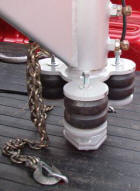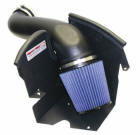International builds the 6.0-liter PowerStroke diesel V-8
engine for Ford Motor Co. as well as diesel engines for
heavy-duty trucks. In a conference call with reporters on
Tuesday, Patrick Charbonneau, International’s chief technical
officer, predicted the company will meet 2007 standards as
long as low-sulfur fuel is available in at least 80 percent of
U.S. filling stations.
Charbonneau said International engineers expect to meet the
tougher emissions standards by focusing on:
Charbonneau said these emission-reduction technologies will be used for light-duty engines, including those in Ford’s F-150 pickup and Excursion SUV, and heavy-duty engines used for commercial vehicles.
All the changes will add cost to diesel engines, which already cost $4,000 more than gasoline engines.
Charbonneau says although International knows it must add equipment to diesel engines to meet the new standards, the company is looking for ways to keep costs from rising excessively.
International can use the current 6.0-liter PowerStroke engine architecture for the F-150 even after the emission laws change. This engine’s intake and exhaust systems can be upgraded without major changes to its cylinder block and heads, International says.
But Charbonneau estimates that fuel economy (in diesels with stricter emissions) could fall about 3 percent. “We usually project some step backwards in overall fuel economy, but what happens is we usually find ways to overcome it."
HOME PAGE 1 2 3
4
TOP
Safe, Secure
Ordering,
Questions on
Internet orders 303-883-1300 We don't share your information
 MrTruck's
Top Picks, Truck, SUV & Trailer
Accessory
Store,
ENTER
MrTruck's
Top Picks, Truck, SUV & Trailer
Accessory
Store,
ENTER
![]()






